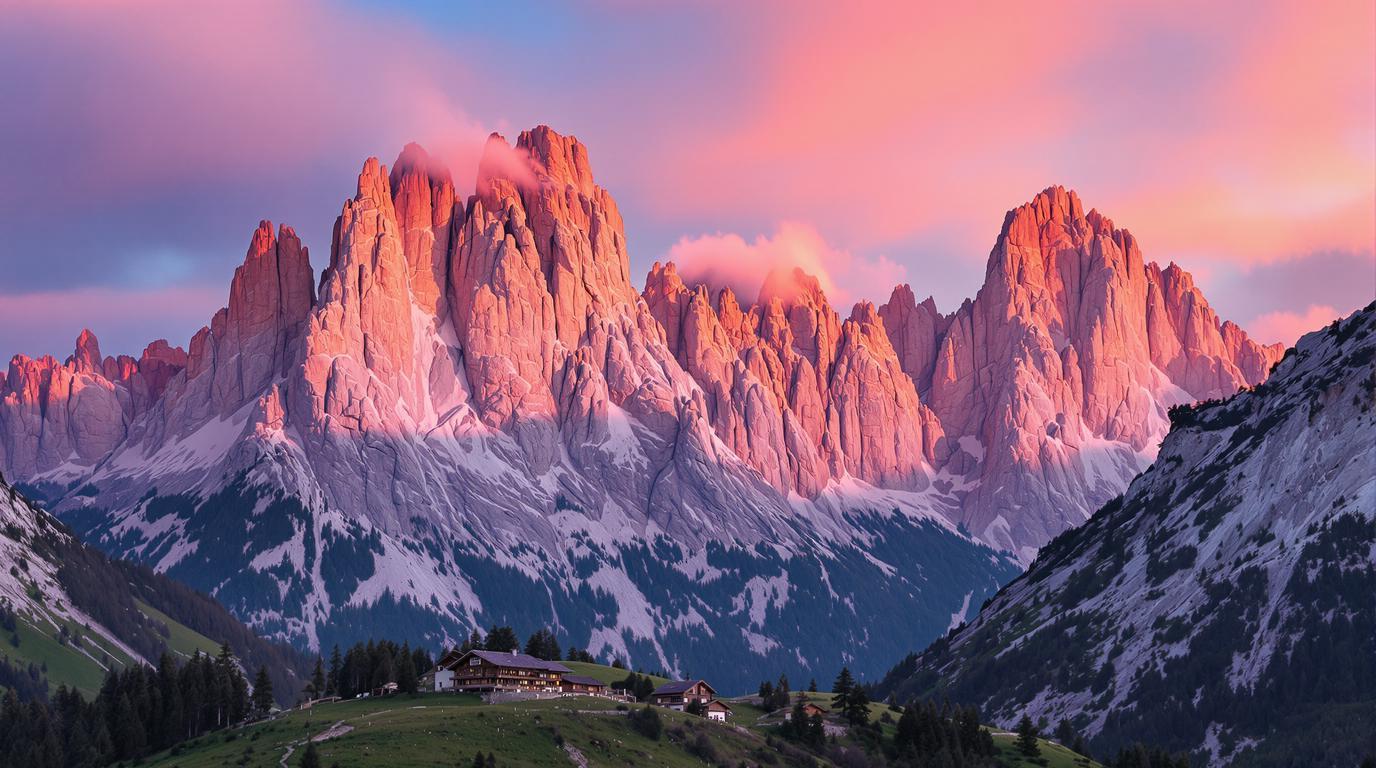Hidden in the heart of Northern Italy’s Veneto region lies a landscape so dramatic it seems plucked from fantasy. The Dolomites, with their pale limestone peaks soaring against azure skies, cradle the elegant town of Cortina d’Ampezzo—a destination where nature’s grandeur meets refined Italian culture.
A UNESCO treasure hiding in plain sight
Recognized as a UNESCO World Heritage Site in 2009, the Dolomites (46.4102° N, 12.0343° E) aren’t just mountains—they’re natural sculptures formed 250 million years ago from ancient coral reefs. Their pale, almost luminous rock creates a phenomenon locals call “enrosadira”—a breathtaking sunset glow that transforms the peaks into blazing coral towers.
“When the alpenglow hits the Dolomites, time seems to stand still,” shares Marco Ghedina, a lifelong Cortina resident and mountain guide. “Visitors forget to breathe when they first witness it.”
The “Queen of the Dolomites” with Olympic pedigree
Cortina d’Ampezzo, draped elegantly across a valley floor, earned its royal nickname by attracting European aristocracy since the early 1900s. The town gained international fame hosting the 1956 Winter Olympics and will again welcome the world in 2026. Unlike America’s rugged national parks, Cortina combines wilderness with sophistication.
Cinque Torri: Where climbers find their paradise
Five dramatic stone towers rise abruptly from alpine meadows, creating an otherworldly rockscape. Climbers scale routes pioneered over a century ago, while history buffs can explore the network of WWI tunnels weaving through the mountains—a sobering reminder of battles fought at 10,000 feet.
Lago di Sorapis: The turquoise jewel requiring dedication
A two-hour hike rewards adventurers with waters so intensely blue they appear artificially colored. Unlike tropical sandbars of the Philippines, this alpine lake derives its color from glacial minerals and remains virtually unknown to mass tourism.
Rifugio culture: Mountain hospitality at its finest
Mountain huts—called rifugios—dot the landscape, offering weary hikers homecooked meals and breathtaking views. Rifugio Lagazuoi, perched at 9,000 feet and accessible by cable car, serves steaming plates of casunziei (beet ravioli) alongside panoramas spanning hundreds of miles.
You haven’t truly experienced the Dolomites until you’ve watched the sunset with strangers who become friends over grappa at a rifugio.
Cortina’s dual personality: Winter wonderland and summer sanctuary
Winter transforms Cortina into a pristine ski paradise, with powdery slopes and stylish après-ski scenes. Summer reveals hidden treasures: wildflower meadows teeming with marmots and chamois. Unlike destinations known for exotic wildlife, the Dolomites offer encounters with alpine creatures against spectacular backdrops.
The Tre Cime circuit: The hike everyone must experience
Three massive stone pinnacles form Tre Cime di Lavaredo, the iconic symbol of the Dolomites. The 6-mile loop around them offers constantly changing perspectives of these geological marvels, making it the region’s signature hike—accessible even to moderately experienced walkers.
Via ferrata: The “iron path” to adventure
These protected climbing routes—steel cables anchored into rock faces—were originally built for WWI troops. Today, they allow adventurous travelers to access exposed mountain terrain safely. The Giovanni Lipella route tunnels through Tofana di Rozes mountain, emerging to heart-stopping views reminiscent of ancient wonders preserved against time.
Cultural crossroads: Where Italian sophistication meets Alpine tradition
Cortina’s pedestrian-friendly center bustles with designer boutiques alongside shops selling traditional Ladin woodcarvings. Unlike Greek islands where donkeys provide transportation, here the juxtaposition of cosmopolitan luxury against ancient mountains creates a captivating contrast.
When to experience Dolomite magic
September brings comfortable hiking temperatures, fewer crowds, and forests ablaze with autumn colors. Winter sports enthusiasts should target January for optimal snow conditions, while wildflower enthusiasts will find alpine meadows erupting with color in July.
The Dolomites exist in a category of their own—neither typical mountains nor merely scenic viewpoints. They represent nature’s perfect harmony: dramatic enough to inspire awe yet accessible enough to explore intimately. In Cortina d’Ampezzo, you don’t just visit mountains; you enter a realm where geology becomes poetry and every vista tells a story written in stone over millions of years.
